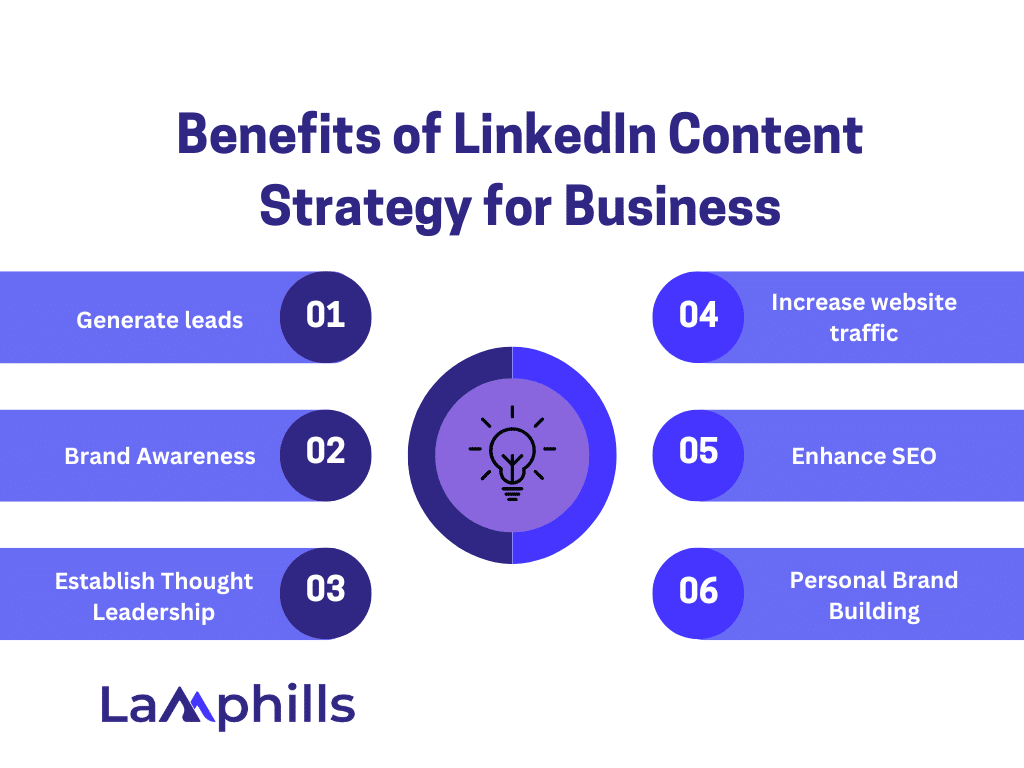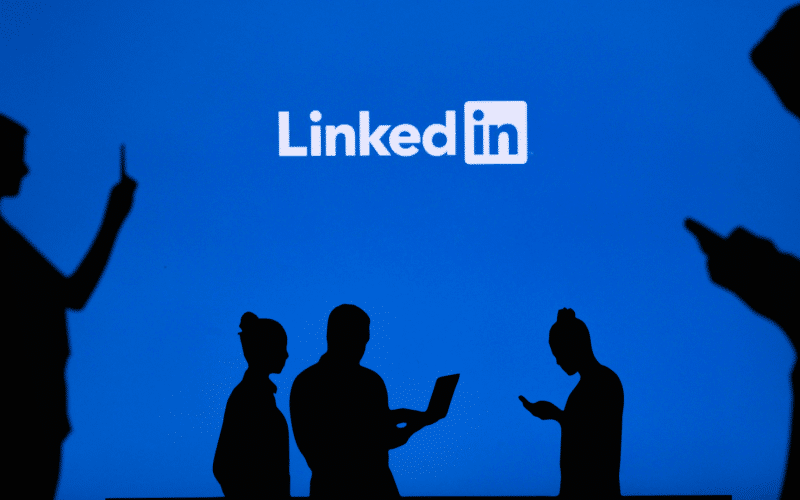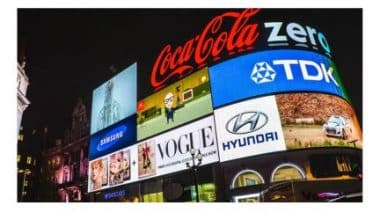When I initially started using LinkedIn for business, I had no idea how effective it could be. It was more than just networking with experts; it was also a crucial platform for sharing valuable content, developing my brand, and generating leads. Creating a complete LinkedIn content strategy changed my approach and produced amazing results. In this post, I’ll walk you through the processes of developing a successful LinkedIn content strategy that you can customize to meet your individual requirements. Let’s get started with a thorough LinkedIn content strategy that will increase engagement and growth.
Understanding LinkedIn’s Content Strategy
A LinkedIn content strategy entails planning, developing, and sharing content on LinkedIn to meet specific corporate objectives. This could include raising brand awareness, generating leads, or developing thought leadership within your industry.
Initially, my LinkedIn posts were infrequent and unfocused. After attending a seminar on social media marketing, I decided to take LinkedIn more seriously. I devised a strategy that included frequent publishing, communicating with my audience, and analyzing performance. The results were incredible—my connections increased by 50%, and I received a huge boost in inbound leads.
Benefits of LinkedIn Content Strategy for Business

LinkedIn has evolved into an increasingly strong tool for B2B marketers. Let’s look at the top five advantages of a LinkedIn content strategy for organizations.
#1. Generate leads
As previously said, by consistently providing high-quality content on LinkedIn, businesses can draw the attention of potential consumers and clients. People will be more willing to conduct business with you once you’ve established yourself as a thought leader in your sector. This will allow you to create more leads.
#2. Brand Awareness
When you post high-quality content on LinkedIn, your pieces can reach millions of individuals. If you can encourage your target audience to read and share your posts, your brand’s visibility on the platform will skyrocket.
As more people see your content, your brand’s awareness will increase. This will help you attract new customers and increase your sales.
Read Also: Brand Awareness Ideas: Most Effective Ideas in 2024 (Practical Tips)
#3. Establish Thought Leadership
A solid LinkedIn content strategy can help professionals position themselves as thought leaders in their respective fields. People will see you as an authority on your subject if you continuously provide valuable and informative content.
This is an excellent method to set yourself apart from the competition and establish confidence with potential consumers. And it is certain to provide a high return on investment in the long run.
#4. Increase website traffic
Did you know incorporating links to your website in your LinkedIn posts will help you get more traffic? This generates qualified leads for your website and converts them into consumers or clients.
Your useful content will most likely capture their attention because the LinkedIn community actively engages with value-rich content. When you reach this level, you will see an increase in your website traffic.
#5. Enhance SEO
Strategic keywords in your LinkedIn posts can help you improve your SEO and rank higher on search engine results pages (SERPs). This strategy will help more people find your articles when they seek information about your sector or business.
Assume you want to become a niche authority by publishing innovative LinkedIn articles and using LinkedIn Live to educate your followers. If you have a well-planned LinkedIn business strategy, your articles will reach your intended audience.
#6. Personal Brand Building
Sure, being a well-known name on LinkedIn is not easy; it requires a lot of organization and inventiveness. However, if you want to outperform your competitors, you must implement a LinkedIn content strategy for personal branding.
For outstanding results, combine LinkedIn Live, articles, regular publishing, and everything else into your content strategy. As previously said, building your professional network will result in more leads and better job chances.
What Constitutes a Good LinkedIn Content Strategy for Personal Branding and Business?
You could be asking yourself, “Why do I need a content strategy on LinkedIn?” “I am not trying to sell anything.” Personal branding is vital for both business owners and individuals.
Why? Because we live in a world where first impressions count, people will form opinions about you based on what they see online.
If you’re looking for a job, potential employers will Google you (even if they don’t confess it) and look at your social media presence before determining whether or not to ask you to an interview.
If you own a business, your potential clients will do the same thing. In other words, if you want to put your best foot forward, you need to have a solid LinkedIn profile. So, how do you develop a strong content strategy?
We made our first million dollars in revenue owing to LinkedIn, which was a key component of our top-of-funnel channel.
And now we’ll explain the exact methods we used, so you can achieve the same outcomes.
Here are the steps you should follow to begin creating your LinkedIn content strategy.
Step #1. Define your goals
Before you can create content, you must first define your objectives. What do you hope to achieve with your LinkedIn content? Common goals include raising brand exposure, generating leads, establishing thought leadership, driving website traffic, and engaging with the audience.
According to LinkedIn, organizations that post weekly have a 2x greater engagement rate.
Step #2. Know Your Audience
Understanding your audience is critical for developing relevant content. Determine your target audience’s demographics, interests, pain issues, and content preferences.
I began by looking at my current LinkedIn contacts and their engagement with my posts. This allowed me to personalize my content to their preferences, resulting in increased engagement.
Step #3. Create Your Content Plan
A content plan specifies the type of content you will produce, the themes you will cover, and the frequency of your articles.
Template for the LinkedIn Content Plan:
LinkedIn Content Planning Template:
Content Type: Articles, posts, videos, and images
Topics: Industry news, tips and tricks, case studies, and personal stories.
Frequency: Daily, weekly, biweekly.
Goals: Engagement, traffic, and leads.
Metrics: Likes, comments, shares, and clicks.
Step #4. Create Quality Content
Content quality is critical. Your content should be informative, entertaining, and useful to your target audience. Use a variety of content types to keep your feed interesting.
LinkedIn postings with photos receive twice as much interaction as text-only posts.
Content Types to Create:
- Articles: In-depth articles on industry trends and insights.
- Short Posts: Use brief tips, updates, or queries to engage your readers.
- Videos: Short instructionals, behind-the-scenes footage, and product demos.
- Images: Use infographics, charts, and visuals to quickly convey your point.
I posted a behind-the-scenes video of our team contemplating a new idea. It received more interaction than any other post that month.
Step #5. Optimize for SEO
Use relevant keywords in your LinkedIn content to improve its search engine optimization. This will allow your content to reach a wider audience.
According to HubSpot, organizations that blog get 55% more website views.
Step #6. Engage With Your Audience
Engagement is essential for creating relationships on LinkedIn. Respond to comments, pose questions, and engage with other users’ content.
I made a point of commenting on industry-related posts every day. This not only boosted my visibility but also allowed me to make vital relationships.
Step #7. Connect with other LinkedIn profiles
Take a few minutes each day to comment on and engage with pertinent postings on your company’s LinkedIn feed.
Here’s how.
- Look for things that are relevant to your content topic: For example, suppose your content niche is B2B sales. Follow all of the people and brands who are leaders in your sector, and connect with other accounts that share this issue, including your competitors.
- See what they are up to: Check out their postings and read their content. Understand what your network is posting about and how you or your brand may contribute to the conversation.
- Leave thoughtful remarks: Leave genuine feedback on the content that individuals and businesses in your network are sharing. Aim to contribute value and insights wherever you can. Leave comments on postings by industry leaders and popular accounts as soon as possible. To ensure you’re first to the table, sort your feed by the most recent posts. This provides you with the best opportunity to capture the attention of the post’s author and audience.
The more you communicate with other accounts in your topic areas, the more likely they are to interact with you, increasing your engagement in return.
Step #8. Promote your LinkedIn content
Simply providing new content and engaging with other users is insufficient.
You must promote your LinkedIn content to get as many people to see it as possible.
Here are some LinkedIn promotion strategies to get you started:
1. Leverage your team
Engagement from your coworkers and team members is critical to enhancing the visibility of your brand’s LinkedIn posts.
That’s because LinkedIn’s algorithm displays your post to your team members’ networks after they like and comment on it.
So, for every individual in your network who shares several similar posts, you boost your reach by their number of followers.
Lamphills routinely shares its social media content to increase interaction. It’s an automatic distribution mechanism ingrained in our company’s culture, and it works!
Each LinkedIn profile on your team is an opportunity for brand recognition and business progress.
2. Leverage your network
You can also market your content to people who are not affiliated with your company.
Never be scared to leverage the power of your network. After all, they connect with you because they are interested in what you do.
You can simply contact people who may be interested and ask them to check out your content or share it with others in their network.
And, if you’ve ever reacted to someone in your LinkedIn DMs who asked you to promote their work, now is the moment to ask them to reciprocate!
3. Leverage LinkedIn groups
LinkedIn groups are an excellent way to engage with people in your target audience or ICP.
Why? Because you can quickly identify a large number of people who you know will be interested in connecting with you based on specific characteristics,.
Following that, you can share useful content that the group will appreciate.
This increases your reach while also adding value to your target audience.
4. Leverage other social media networks.
As long as your LinkedIn profile is public, you can publish your updates on other social media platforms.
Sharing your LinkedIn posts on other platforms exposes a fresh audience to your content. They receive a link to your LinkedIn page, which might help you expand your network and follower base.
Simply copy the post’s URL and share it with people or groups in your target audience.
Send direct communications to people within your target audience.
Sending direct messages to your target audience allows you to build the most personal relationships.
One option is to do it manually, selecting profiles one by one and typing personalized greetings. It will get the job done, but you will have to spend hours identifying the correct people and personalizing each message. Instead, we advocate combining LinkedIn searches with Lemlist’s automated messaging to scale your personalization efforts with your intended audience. You can even receive an AI-generated sequence ready to connect with hundreds of LinkedIn prospects in seconds.
5. Send LinkedIn voice messages
Written messages, such as emails and chat messages, are excellent; however, what if you could give your leads audio messages?
So, you can send LinkedIn voice notes.
When you incorporate new channels and mediums into your outreach, your engagement will skyrocket!
6. Create sponsored posts
If you truly want to increase the reach of your article, you can create a LinkedIn-sponsored post. It’s essentially an advertisement.
It is expensive and does not always guarantee a high ROI, therefore, if you are a small business, we advocate employing it as a last resort.
That is not to imply that sponsored posts are wrong. In fact, it can significantly increase your reach. However, if you can receive equal benefits for free, you should test it first.
Step #9. Edit your LinkedIn content strategy based on your outcomes
The strategy you use when you first start publishing on LinkedIn will evolve over time as you learn what works and what doesn’t.
A strategy that changes regularly demonstrates that you are growing as a brand and learning from your experiences.
Key takeaways
- Determine what you want to accomplish with your LinkedIn content to help guide your strategy.
- Customize your content to meet the demands and interests of your target audience.
- Post different, valuable content regularly to keep your audience engaged.
- Engaging with your audience and industry peers increases visibility and fosters partnerships.
- Continuously monitor your performance and alter your strategy based on the data.
Conclusion
Understanding your goals, identifying your audience, providing high-quality content, and interacting consistently are all essential components of developing a thorough LinkedIn content strategy. By following these steps, you can use LinkedIn to achieve considerable business growth. What problems did you confront with your LinkedIn content strategy, and how did you solve them? Share your experiences, and let’s talk about how we can all enhance our LinkedIn profiles.
Related Articles
- How to Turn Unlinked Mentions into Backlinks: Practical Tips from My Experience
- HOW TO SHOW YOUR PROMOTION ON LINKEDIN IN 2024: Simplified Guide
- Key Tips To A Successful Partnership Announcement (Right Way to Make a Partnership Announcement)
- The Only 6 PR Industry Trends That Actually Matter in 2024
- 8 Innovative Training Strategies You Must Consider for New Employees






